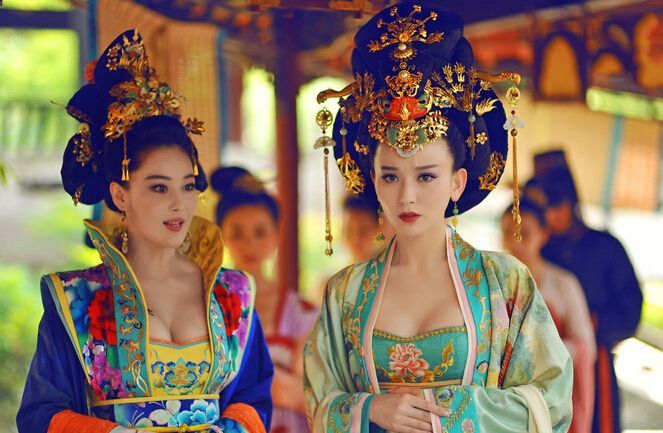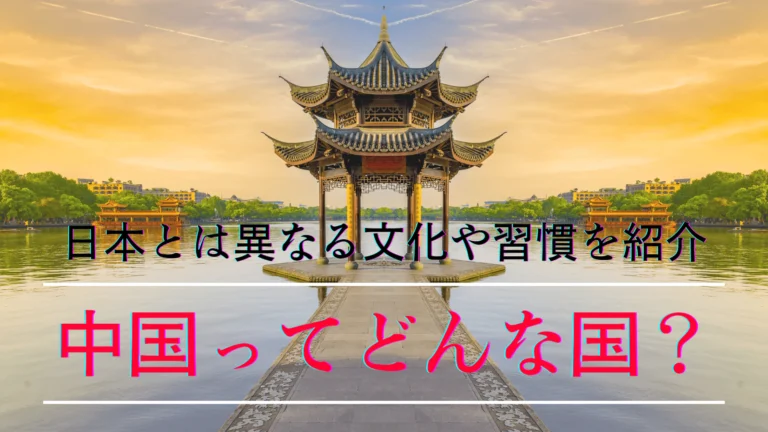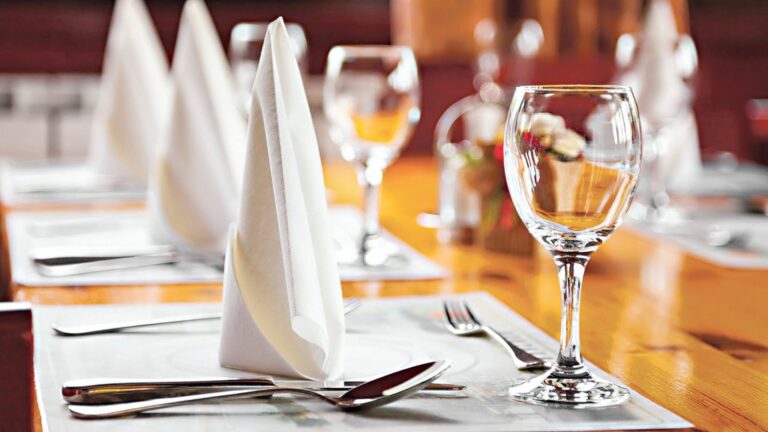
The diplomatic rituals and characteristics of the Tang Dynasty
Source: People’s Forum, Author: Li Hongbin , Editor – Zhou Xiaoli, Art Editor- Yang Lingling
The construction of a cross-agricultural and steppe complex provided sufficient conditions for the Tang Dynasty in the early stage to have connections with other political powers in surrounding distant areas. This transnational diplomatic network centered on the Tang Dynasty was dubbed the “tributary system (system)”, which was intended to show the difference in the order of sectarian-vassal relations. What was behind it was the institutional construction of etiquette and legal norms dominated by the Central Plains’ view of the world.
If the founding of the Tang Dynasty in 618 (the first year of Wude) gave people a rising power, then in 630 (the fourth year of Zhenguan), the Tang Dynasty after conquering the Eastern Turks, the biggest rival in the grassland, established Taizong Li Shimin as the “Emperor” The title of “Khan of Heaven” is the same as the title of “Heavenly Khan”, which marks the establishment of the image of a diverse and complex dynasty that ruled the farming and grassland nomads in the Central Plains and stood in the east of the world. ① Although this is a further integration of the dynasty based on the Qin and Han Dynasties, its expansion into the surrounding areas has led to the expansion of “diplomatic relations” in the communication network between the Central Plains and outside the region. This has become a prominent symbol of the prosperous times of the Tang Dynasty, and it has also become a key factor in our attention to the Tang Dynasty, a focus.

Etiquette Patterns of Diplomatic Relations in the Tang Dynasty
According to the authoritative record of the administrative code “Liu Dian of the Tang Dynasty”, the Honglu Temple in the Tang Dynasty had the function of “distinguishing the rank of all the Yi and Di monarchs from all over the world and treating them as guests”②. It was responsible for the interactions between the imperial court and other political powers. A specialized agency that focuses on arranging matters related to visiting kings and envoys in Chang’an City. Documents and historical materials in this area have always attracted widespread attention from scholars at home and abroad. However, the sculptures and murals with strong visual effects have had an important impact on the public, such as the “Stepping Chariot Picture” in which Emperor Taizong of the Tang Dynasty met with the Tibetan envoy Lu Dongzan, and Emperor Gaozong and Wu Zetian The group of worship statues of the feudal chiefs in the Qianling Mausoleum and the envoy pictures appearing in the murals in the tomb of Prince Zhanghuai are typical examples.
The scene of more than 60 foreign ministers worshiping in Qianling Mausoleum most attracts people’s attention with its shocking visuals. The identity and purpose of these foreign ministers once became the focus of discussion. Li Haowen of the Yuan Dynasty clarified the text of nearly 40 stone statues in the “Chang’an Zhitu”③. After modern identification, most of them were leaders of the Turks, Tubos, Tuyuhun and other surrounding tribes. Some of them were the nine surnames of Zhaowu, Persia and other distant places. Messenger of the domain. Regardless of the specific goals and procedures, there is no doubt that the establishment of the “differential order” relationship between the Tang Dynasty and surrounding foreign nations and even foreign countries as suzerains and vassals has become the most prominent motive behind all the motives.
In contrast, the “Guest Envoys” on the east and west sides of the tomb of Prince Zhanghuai are also a portrayal of the diplomatic etiquette between the Tang Dynasty and other tribes and regimes. However, because there are few written descriptions, they are as full of content as the stone statues of Qianling Mausoleum. There are obscure variables that arouse people’s curiosity and speculation. To this day, the “Guest Envoys Picture” continues to be pursued. The description of Chang’an officials leading the Tibetan chieftains and envoys to achieve the purpose of meeting between the two sides through diplomatic etiquette and exaggerating the grand atmosphere of the Tang Dynasty seems to be more in line with the specific situation of that era. This is just like the courtesy of “waiting for the kings and envoys of the four barbarians”④.
The emperor used the ceremony of receiving kings and envoys from various places and distant countries to adjust the Tang Dynasty, these political forces and even the national power to the main level. The auxiliary and different tracks should be the central meaning of the etiquette. The places where these ceremonies were held were mostly between the Taiji Hall and Chengnan Gate in the Chang’an Palace, or the Hanyuan Hall of the Daming Palace. They were also places where the emperor, officials, and foreign envoys celebrated the New Year and even hosted banquets for dignitaries from Tibet. ⑤The grand scale, the exquisite ceremony, and the clear distinction between the main and auxiliary positions all show the respect for the monarch’s status and the example of the world order centered on the Tang Dynasty.
Although the above case is a portrayal of the diplomatic etiquette of the Tang Dynasty, its selection was not deliberate. As far as the display of such rituals in the Tang Dynasty is concerned, textual documents, especially official records, are undoubtedly the most convincing, but the intuitive and vivid images of stone sculptures and tomb murals leave a more sensory imprint. Both cases are closely related to the monarch’s mausoleum and its accompanying burials, or are themselves components of it. This is actually determined by the mausoleum’s role as a symbol of dynasty’s legal system. The mausoleum is a reflection of the monarch’s life and death. It expresses the legitimacy of the monarch’s rule through the reshaping of the builder. As a symbol of the relationship between the Tang Dynasty and the outside world reflected in the imperial power extended internally and externally by the Tibetan envoys, it is also a realistic scene. The reproduction is nothing but the subjective imagination and design of the creator.

The main features of diplomatic relations in the Tang Dynasty
The vassal chiefs, leaders of foreign political powers or foreign military and political officials attached to the Tang Dynasty, out of the rules of “ritual”, practiced the etiquette of the Tang Dynasty in the form of expressions of worship or the behavior of accompanying them around the mausoleum after death. Because it involves the rules of diplomatic etiquette, it is exclusively hosted by Honglu Temple, the Minister of Foreign Affairs, as mentioned above. However, the person who regulates this set of etiquette comes from the host and guest doctor of the Ministry of Rites of the same province, which is famous for being responsible for “the affairs of the imperial court of various Tibetans”. ⑥The functions of these two institutions should be manifested by the issuing of decrees by the Ministry of Rites and the specific responsibility of Honglu Temple; the implementation of this set of rituals depends on the etiquette and legal norms institutionally constructed by the imperial court. It is through this construction that the legal status of the dynasty can be achieved Establish and gain recognition from the periphery.
As one of the five rites of communication between the dynasty and the surrounding outside world, the guest ceremony emphasizes “valuing the etiquette of guest and host”⑦, depicting the dominant position of the Tang Dynasty in that world. This is clearly reflected in the contrast between the Tang Dynasty and the Indian world, the Muslim world, the Byzantine Empire and the Latin Christian world. ⑧It can be seen that the essence of guest courtesy lies in how to adjust the relationship between the Tang Dynasty and other forces and other regimes. Compared with “domestic affairs”, it focuses on “diplomacy”. So, what are the characteristics of its “diplomacy”?
Fairbank described this “diplomacy” as a “tributary system” (or “tributary system”). Its basic characteristics are: with the emperor as the center, it imposes management on the surrounding areas, forming a set of unbalanced organizations with superiors and subordinates. The system, which uses Confucian civilization theory as its ideology, integrates China and its surrounding areas into one. ⑨ Before and after this, Japanese academic circles represented by Nishijima Sadao summarized this relationship as the “canonization system”, emphasizing the differential pattern of East Asian relations constructed with China as the center. ⑩ Domestic and foreign academic circles have conducted many studies on this issue and there are divergent opinions. However, this cross-dynasty system dominated by Confucian ethics in different orders of “center-four directions” is generally recognized by everyone. Correspondingly, we can see that before modern times, human society included the mutual annexation of nomadic regimes on the grasslands, the numerous states in the Indian world, the competition and replacement of each other by the countries in Central and Western Asia, and the continuous succession of the Eastern Roman Empire, or Among the feudal princes in Latin Europe, the large and small political powers in these areas were separated in grasslands, oases and even plains and valleys. They relied more on the expansion of their own energy. It was rare to see a power network with tribute signs like the Tang Dynasty building a center and periphery. This prompts us to further ask: Why did the Tang Dynasty have such a “diplomatic” system and stand on the eastern edge of the Eurasian continent?

The basic attributes of diplomatic relations in the Tang Dynasty
The division of labor between a country’s “diplomacy” and “domestic affairs” is a definition that people are very familiar with. However, unlike the classical Tang Dynasty with today’s nation-state paradigm, the boundaries between the two are far from clear. This is Based on the basic attributes of a dynastic state.
The establishment of the Tang Dynasty, as analyzed by Mr. Chen Yinke, was achieved by the political forces with the Guanlong Group as the core through annexation and the surrender of various anti-Sui forces. ⑪ Starting from Guanzhong, it occupied Shandong (to the east of Hangu Pass), controlled the Yangtze and Huaihe Rivers, and then built a dynastic structure in the core hinterland of farming; under the leadership of Emperor Taizong and Emperor Gao, it also controlled the people in the desert grasslands, the northeastern outskirts, and the hinterland of the Western Regions in non-agricultural areas. The area of their activities was also included, thus forming a composite dynastic structure that spanned the north and south of the Great Wall. ⑫ Once this kind of concentric development from the inside out went beyond the traditional farming land, the Tang Dynasty would face non-Han people and their political forces such as Turks, Tiele, Tubo, Khitan or other countries in the Western Regions. What kind of relationship did the Tang Dynasty have with them, and what measures did it take to deal with them? This is not only its own consideration, but also involves the interaction and game between two or more parties. Military expansion in the form of military conquests was certainly indispensable, but the administrative structure that followed either started with Zhengzhou Zhengxian to equate it with the mainland, or used the establishment of Jisi Prefecture to show the expediency of governance based on the settlement of the Tang Dynasty’s sovereignty. Diplomatic relations were accompanied by this set of measures to deal with the periphery and the periphery. As Fairbank said, “Foreign relations are just an extension of China’s internal affairs.” This indeed reveals the essence of the Tang Dynasty’s “diplomacy.” Why is this so?
As discussed above, the reason why the Tang Dynasty’s relationship with surrounding foreign forces was placed in the category of “guest etiquette” means that “diplomatic” etiquette is part of the country’s institutional construction. What determined this set of institutional norms was the state structure of the Tang Dynasty, which was a complex internal and external system. Why did the Tang Dynasty have such a leap-forward construction? This is closely related to the recent tradition of Hu-Han compatibility and diverse absorption among the ruling groups, but in essence it is the implementation of the concept that emerged in the Western Zhou Dynasty and expanded in the Qin and Han Dynasties. , and is represented by the “five services” extending from the center to the four directions under the control of Kyushu, Sihai and Tianxia. ⑭ Through military deployment, administrative establishment and the exaggeration of Confucian consciousness, the Tang Dynasty was shaped into a transcendent giant country that accommodated both Hu and Han. This concept of national view is combined with the view of civilization, and the Central Plains is regarded as the source of civilization.
From this, the radiation of Chinese culture presented in the surrounding areas is the process of “educating” the world; the object of “enlightenment” is of course Those people who lack the influence of Confucian culture and the areas where they live. In this way, the “etiquette norms” dominated by the “view of the world” became an important way and channel for the promotion of civilization in the Central Plains. This was the construction of the differential order system of superiority and inferiority, elder and younger in the sectarian-vassal relationship under the etiquette mark of the “diplomacy” of the Tang Dynasty legitimacy basis.

Important Characteristics of Tang Dynasty’s Diplomatic Relations
As the evolution of human civilization under the control of state power, although it only lasts for thousands of years, the energy it releases and its implications exceed any previous era. Due to differences in many factors in the natural environment and crowd gathering, human activities after entering the state form, combined with the political body in which they are located, show many characteristics that adapt to the local environment and are very different from other similar groups. Just as people discuss the fragmented geography of Europe in the dynastic era, which was full of kingdoms, principalities or vassals, the large dynasties built by Eastern China on the basis of the unification of the Qin and Han Dynasties have become the pursuit of politicians. This is also the same as the Eurasian continent. The Yellow River and Yangtze River on the east edge are closely related to the geographical conditions suitable for farming and convenient transportation. The lack of barrier space provided conditions for large-scale dynasties to spread in eastern Asia.
Based on this, the continuous power structure of Xia, Shang and Zhou gave birth to the unified dynasties of Qin and Han, and also promoted the Tang Dynasty, which adhered to tradition, to enter the contemporaneous countries. The peak of construction. This path of expansion from the inside out, from the center to all directions, created unique conditions for it to connect with surrounding distant areas. It was inevitable that “diplomacy” accompanying internal political governance became the means for the Tang Dynasty to contact the outside world; and relying on Once the “civilization” view of the world based on etiquette and norms was applied to the “diplomacy” derived from internal affairs, the sinicization process of “barbarians” that accepted “barbarism” as “civilization” became the “internal responsibility” of the dynasty. This is the true meaning of what we understand as the “diplomacy” of the Tang Dynasty, with distinctions between top and bottom, orderly hierarchy, and the title “tribute system (or system).”
(The author is a professor at the School of History and Culture, Minzu University of China).
References:
【Note】
①S. A. Adshead, T’ang China: The Rise of the East in the World History, New York: Palgrave Macmillan, 2004.
② Edited by Chen Zhongfu: “Honglu Temple”, Volume 18, “Liu Dian of the Tang Dynasty”, Beijing: Zhonghua Book Company, 1992, p. 505.
③ Written by Song Minqiu in the Song Dynasty and Li Haowen in the Yuan Dynasty, edited by Xin Deyong and Lang Jie: “Ch’ang’an Zhi Tu”, Xi’an: Sanqin Publishing House, 2013, pp. 47-50.
④ “New Book of Tang” Volume 16 “Ritual and Music Record Six”, Beijing: Zhonghua Book Company, 1975, page 381.
⑤Wang Zhenping: “Study on Bingli in the Tang Dynasty: Diplomatic Information Transmission from an Asian Perspective”, Shanghai: Zhongxi Book Company, 2017, pp. 34-49.
⑥ Edited by Chen Zhongfu: Volume 4 of “Tang Liudian”, “Book of Rites”, Beijing: Zhonghua Book Company, 1992, page 129.
⑦ Edited by Wang Wenjin and others: “Tongdian” Volume 74 “Rituals·Evolution·Binli 1”, Beijing: Zhonghua Book Company, 1988, p. 2015.
⑧Li Hongbin: “The Rise of the Tang Dynasty in a Global Perspective – Comments on SAM Aizhed’s “Tang Dynasty China: The Rise of the East in World History””, edited by Yu Taishan and Li Jinxiu: “Journal of Eurasia” New 7th Issue, Beijing: The Commercial Press, 2018, pp. 236-246.
⑨[US] Fairbank: “A Preliminary Idea”, edited by Fairbank and translated by Du Jidong: “China’s World Order: Traditional China’s Foreign Relations”, Beijing: China Social Sciences Press, 2010, pp. 8-9 Page.
⑩[Japan] Nishishima Sadao: “The Ancient Chinese Country and the Eastern World”, Tokyo: Tokyo University Press, 1983, pp. 415-468.
⑪Chen Yinke: “Review of the Political History of the Tang Dynasty”, Shanghai: Shanghai Ancient Books Publishing House, 1982, pp. 48-49.
⑫Li Hongbin: “The Changes of the Northern Territory of the Tang Dynasty—Also Discussing the Nature and Attributes of Territorial Issues”, “Chinese Frontier History and Geography Research”, Issue 2, 2014, pp. 63-76.
⑬[US] Fairbank: “A Preliminary Idea”, edited by Fairbank and translated by Du Jidong: “China’s World Order: Traditional China’s Foreign Relations”, Beijing: China Social Sciences Press, 2010, page 10.
⑭Li Hongbin: “Zhonghua Zhengshuo and the Inner Asian Frontier: Also on the Implications of the Great Wall Zone in the Northern Tang Dynasty”, “Academic Monthly”, Issue 2, 2017, pp. 13-19.


